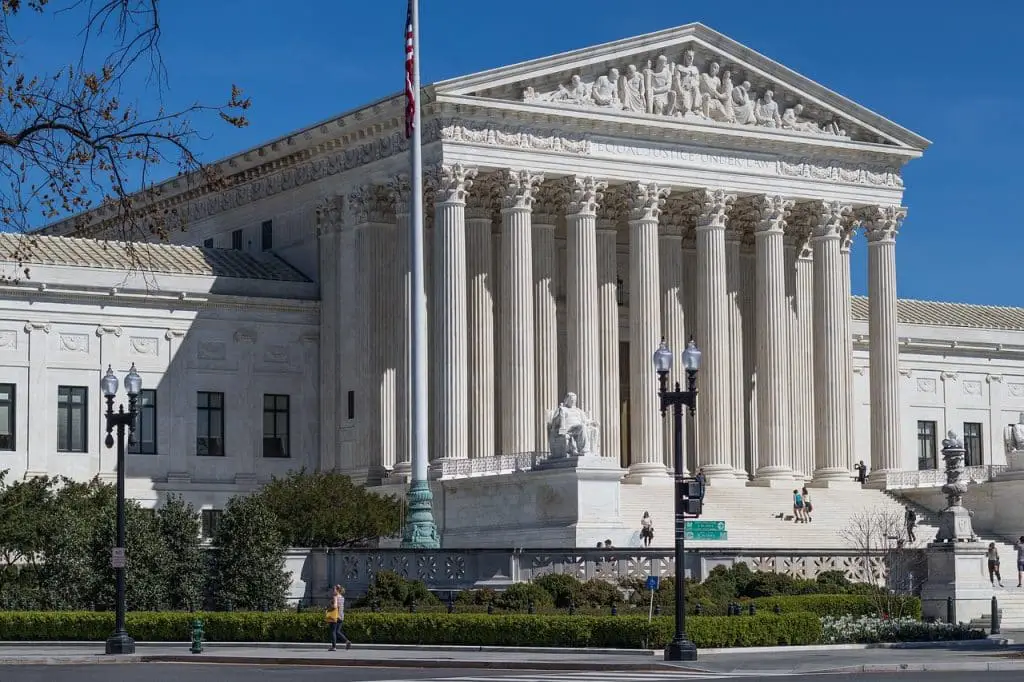In the realm of Supreme Court decisions, the divergent outcomes of Schenck v. United States and New York Times Co. v. United States conceal intriguing commonalities.
These landmark cases, despite addressing distinct circumstances, share pivotal themes related to the boundaries of freedom of speech safeguarded by the First Amendment.
Introduction
Though the outcomes of Schenck v. United States and New York Times Co. v. United States differed, these landmark Supreme Court decisions had some commonalities.
Both cases dealt with issues related to freedom of speech and the extent to which it is protected under the First Amendment.
While Schenck focused on the limits of free speech during wartime, New York Times centered around prior restraint in publishing classified government documents.
The Espionage Act and Schenck’s Arrest
During World War I, the United States government enacted the Espionage Act of 1917 to suppress any form of dissent that could potentially undermine its war efforts. Under this act, Charles T. Schenck, a prominent member of the Socialist Party in America, was arrested for distributing leaflets that urged young men to resist the military draft.
Schenck’s actions were seen as a direct violation of the Espionage Act, which made it illegal to obstruct recruitment or encourage insubordination within the armed forces. His arrest marked an important turning point in American history as it raised fundamental questions about the limits of freedom of speech during times of national crisis.
Schenck’s Argument: Freedom of Speech
In his defense, Schenck argued that his actions were protected under the First Amendment rights to freedom of speech. He claimed that he was merely exercising his right to express his opposition to conscription and advocate for pacifism.
Schenck relied on the concept of “clear and present danger,” arguing that his words did not pose an immediate threat to national security or incite violence. He believed that individuals had a constitutional right to criticize government policies without fear of persecution.
Supreme Court Decision: Clear and Present Danger
However, in a unanimous decision, the Supreme Court ruled against Schenck in 1919. Justice Oliver Wendell Holmes Jr., writing for the court, introduced the famous “clear and present danger” test as a criterion for determining when restrictions on free speech are justified.
The court held that Schenck’s distribution of anti-draft leaflets created a clear and present danger by obstructing military recruitment efforts during wartime. They reasoned that even though his words may not have directly caused harm at that moment, they had the potential to disrupt national security by undermining necessary military operations.
The Outcome of Schenck v. United States
The Impact on Free Speech in the United States
The landmark Supreme Court case, Schenck v. United States, had a significant impact on free speech rights in the United States. In this case, decided in 1919, the Court upheld the conviction of Charles Schenck under the Espionage Act of 1917 for distributing anti-war leaflets during World War I.
The outcome of this case established an important precedent that limited First Amendment protections for speech when it presented a “clear and present danger” to national security or public safety. This ruling allowed restrictions on speech that could potentially incite violence or obstruct military recruitment efforts.
Distinguishing Factors: Schenck v. New York Times
While the outcome of Schenck v. United States set a precedent for limiting free speech rights, it is essential to distinguish this decision from subsequent rulings such as New York Times Co. v. Sullivan (1964). In the latter case, the Supreme Court held that public figures must prove “actual malice” to succeed in defamation lawsuits against media organizations.
One key distinguishing factor between these two cases is the nature of the speech involved. In Schenck, it was political dissent during wartime, while New York Times involved criticism of public officials and figures regarding their official duties.

